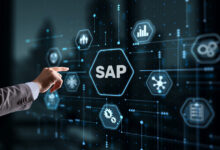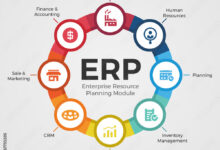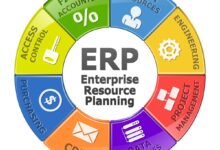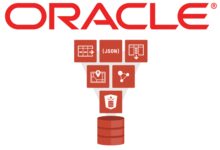SAP ERP Upgrade Services: 7 Proven Strategies for a Seamless Transition
Upgrading your SAP ERP system isn’t just a technical task—it’s a strategic move. With the right SAP ERP upgrade services, businesses can unlock efficiency, scalability, and innovation across operations.
Understanding SAP ERP Upgrade Services

SAP ERP (Enterprise Resource Planning) has long been the backbone of global enterprise operations, integrating finance, HR, logistics, and supply chain functions into a unified platform. As technology evolves, so must these systems. SAP ERP upgrade services are specialized solutions designed to help organizations transition from legacy SAP environments—like SAP ECC—to modern platforms such as SAP S/4HANA. These services ensure that upgrades are executed smoothly, with minimal downtime and maximum return on investment.
What Are SAP ERP Upgrade Services?
SAP ERP upgrade services encompass a full lifecycle of activities—from initial assessment and planning to data migration, system testing, and post-go-live support. These services are typically delivered by certified SAP partners or internal IT teams with deep expertise in SAP architecture. They include both technical and functional components, ensuring that not only does the software update, but business processes are also optimized.
- Technical upgrades involving database and operating system changes
- Functional enhancements to align with new business requirements
- Custom code remediation and compatibility checks
Why Businesses Need Professional Upgrade Support
While SAP provides tools like the Software Update Manager (SUM) and Maintenance Planner, executing an upgrade without expert guidance can lead to costly errors. According to SAP’s official documentation, over 60% of failed upgrades stem from inadequate planning or lack of specialized knowledge. Professional SAP ERP upgrade services mitigate risks by providing structured methodologies, proven templates, and experienced consultants who understand the nuances of complex landscapes.
“An SAP upgrade is not just about new software—it’s about transforming how your business operates.” — SAP Customer Success Report, 2023
Key Drivers for Upgrading SAP ERP Systems
Organizations don’t upgrade their SAP systems merely for the sake of staying current. There are compelling business and technological reasons driving the need for modernization. Understanding these drivers helps justify the investment and align stakeholders across the enterprise.
Digital Transformation and Innovation
In today’s fast-paced market, digital transformation is no longer optional. Companies leveraging SAP ERP upgrade services gain access to advanced capabilities like real-time analytics, AI-driven insights, and machine learning integrations. For example, moving to SAP S/4HANA enables in-memory computing through SAP HANA, drastically improving data processing speeds and decision-making agility.
- Real-time reporting replaces batch processing delays
- Embedded analytics provide instant visibility into KPIs
- Integration with IoT and predictive maintenance tools becomes seamless
End of Support for Legacy Systems
SAP has announced the end of mainstream maintenance for SAP ECC 6.0 by December 31, 2027. After this date, no further security patches, legal updates, or technical support will be provided. This deadline is a critical catalyst for organizations still running on older SAP ERP versions. Delaying an upgrade beyond this point exposes companies to cybersecurity vulnerabilities, compliance risks, and operational inefficiencies.
By engaging SAP ERP upgrade services early, businesses can plan a phased migration strategy rather than facing a last-minute scramble. Proactive planning allows for better resource allocation, budget forecasting, and change management.
Competitive Advantage and Operational Efficiency
Modern SAP systems streamline processes, reduce manual interventions, and improve cross-departmental collaboration. A study by SAPinsider found that companies upgrading to S/4HANA reported a 30% reduction in month-end closing times and a 25% improvement in order-to-cash cycle efficiency.
- Automated workflows reduce human error
- Unified data models eliminate silos
- Cloud-ready architectures support remote work and scalability
Types of SAP ERP Upgrades: Choosing the Right Path
Not all SAP upgrades are the same. The approach a company takes depends on its current landscape, business goals, and IT maturity. SAP ERP upgrade services help organizations evaluate and select the most appropriate upgrade path.
Technical Upgrade (Brownfield Approach)
The brownfield approach involves upgrading an existing SAP ERP system to SAP S/4HANA while retaining much of the current data model and business processes. This method is ideal for organizations that want to minimize disruption and leverage existing investments in customizations and integrations.
However, it requires thorough cleanup of legacy data and adaptation of custom code to meet S/4HANA standards. Tools like the SAP Readiness Check and Custom Code Migration Worklist (CCMWL) are used extensively during this process.
- Preserves historical data and business continuity
- Shorter timeline compared to full reimplementation
- Requires significant pre-upgrade system preparation
System Conversion with Landscape Transformation (Greenfield Approach)
The greenfield approach is a clean-slate implementation where a new SAP S/4HANA system is built from scratch. This option allows businesses to redesign processes, eliminate outdated practices, and adopt best-in-class configurations.
While more time-consuming and costly, it offers the highest degree of optimization. SAP ERP upgrade services often include blueprinting workshops, process mining, and change management support to ensure success in greenfield projects.
- Enables process standardization and simplification
- Reduces technical debt and legacy complexity
- Ideal for mergers, acquisitions, or major organizational restructuring
Hybrid or Selective Data Transition (Bluefield)
Introduced by SAP, the bluefield approach combines elements of both brownfield and greenfield. It allows companies to migrate only selected parts of their business (e.g., a specific division or region) to a new S/4HANA system while keeping others on the legacy platform temporarily.
This phased strategy reduces risk and allows for parallel testing. SAP ERP upgrade services play a crucial role in orchestrating data synchronization, integration layers, and user training across hybrid environments.
“Bluefield gives enterprises the flexibility to modernize at their own pace without disrupting core operations.” — SAP Digital Business Services
The Role of SAP ERP Upgrade Services in Risk Mitigation
Any major IT transformation carries inherent risks—data loss, system downtime, user resistance, and budget overruns. SAP ERP upgrade services are specifically designed to identify, assess, and mitigate these risks throughout the project lifecycle.
Comprehensive Risk Assessment and Planning
Before any technical work begins, professional upgrade services conduct a detailed risk assessment. This includes evaluating system dependencies, identifying critical business processes, and mapping out potential failure points. A risk register is created and updated regularly throughout the project.
- Identification of single points of failure
- Impact analysis of third-party integrations
- Business continuity and disaster recovery planning
Data Integrity and Migration Assurance
Data is the lifeblood of any ERP system. During an upgrade, ensuring data accuracy, completeness, and consistency is paramount. SAP ERP upgrade services employ robust data migration frameworks that include extraction, cleansing, transformation, validation, and reconciliation phases.
Tools like SAP Data Services and SAP Migration Cockpit are used to automate and audit the migration process. Additionally, multiple test runs are conducted in non-production environments to verify data quality before go-live.
Downtime Minimization and Cutover Management
System downtime during an upgrade can cost thousands—or even millions—of dollars in lost productivity and revenue. SAP ERP upgrade services use advanced cutover planning techniques to minimize disruption.
- Phased cutover strategies with parallel run options
- Pre-scheduling of all migration activities
- Real-time monitoring and rollback plans in case of issues
For instance, a global manufacturer reduced its planned downtime from 72 hours to just 8 hours by leveraging SAP ERP upgrade services with a well-executed cutover plan.
Choosing the Right SAP ERP Upgrade Service Provider
Selecting the right partner is one of the most critical decisions in an upgrade project. The service provider will influence the project’s speed, cost, quality, and long-term success.
Certifications and SAP Partnership Status
Not all consultants are created equal. Look for providers with official SAP certifications and a strong partnership status—such as SAP Platinum or Gold Partner. These designations indicate proven expertise, access to SAP resources, and adherence to best practices.
- SAP-certified consultants for specific modules (FI, CO, MM, SD, etc.)
- Validated experience with S/4HANA migrations
- Access to SAP EarlyWatch Alerts and Support Portal
Proven Methodology and Project Frameworks
Top-tier SAP ERP upgrade services use structured methodologies like SAP Activate, which combines agile principles with predefined content and tools. SAP Activate provides a clear roadmap from discovery to deployment, including:
- Prepare phase: System assessment and team setup
- Explore phase: Process discovery and requirement gathering
- Realize phase: Configuration, development, and testing
- Deploy phase: Cutover and go-live
- Run phase: Post-go-live support and optimization
Providers who follow SAP Activate reduce project uncertainty and improve predictability.
Industry-Specific Experience
A provider with experience in your industry—be it manufacturing, healthcare, retail, or utilities—brings valuable insights into regulatory requirements, supply chain complexities, and operational workflows. For example, a pharmaceutical company upgrading its SAP ERP system benefits from a service provider familiar with FDA compliance and batch tracking requirements.
Ask potential vendors for case studies, client references, and success metrics from similar projects.
Cost Considerations and ROI of SAP ERP Upgrade Services
While SAP ERP upgrades require significant investment, the long-term return on investment (ROI) often justifies the expense. Understanding the cost structure helps organizations budget effectively and measure success.
Breakdown of Upgrade Costs
The total cost of an SAP ERP upgrade includes several components:
- Licensing Fees: Depending on the deployment model (on-premise, private cloud, public cloud), licensing costs vary. SAP S/4HANA licenses are typically more expensive than ECC but include advanced analytics and AI features.
- Consulting Fees: Professional services from SAP partners can range from $150 to $300 per hour, depending on expertise and geography.
- Infrastructure Costs: Upgrading to S/4HANA may require new hardware or cloud subscriptions to support the HANA database.
- Training and Change Management: User adoption is critical. Budget for training programs, communication campaigns, and super-user networks.
A mid-sized company might expect to spend between $1 million and $5 million on a full S/4HANA upgrade, depending on scope and complexity.
Measuring Return on Investment
ROI isn’t just about cost savings—it includes improved agility, better decision-making, and enhanced customer satisfaction. Key performance indicators (KPIs) to track include:
- Reduction in IT maintenance costs post-upgrade
- Faster financial close cycles
- Improved inventory turnover and supply chain responsiveness
- Increased employee productivity due to simplified interfaces
According to a SAP-commissioned study by IDC, organizations achieve an average ROI of 217% over three years after migrating to S/4HANA.
Hidden Costs to Watch For
Some costs are not immediately apparent but can impact the budget if not anticipated:
- Custom code remediation: Legacy ABAP code may need rewriting
- Third-party integration upgrades: Add-ons from non-SAP vendors may not be compatible
- Extended testing cycles due to unforeseen issues
- Post-go-live stabilization and hypercare support
Engaging SAP ERP upgrade services early helps uncover these hidden costs during the discovery phase.
Post-Upgrade Optimization and Continuous Improvement
The go-live moment is not the end—it’s the beginning of a new operational era. SAP ERP upgrade services don’t stop at deployment; they extend into post-upgrade optimization and continuous improvement.
Hypercare Support and Stabilization
Immediately after go-live, a dedicated support team—often provided by the SAP ERP upgrade services partner—remains on standby to resolve issues quickly. This period, known as hypercare, typically lasts 4–8 weeks and ensures smooth user adoption and system stability.
- 24/7 incident management
- Performance tuning and bottleneck resolution
- User issue resolution and workaround implementation
Process Optimization and Analytics Enablement
Once the system stabilizes, organizations can begin leveraging the full power of SAP S/4HANA. SAP ERP upgrade services often include post-migration workshops to identify optimization opportunities.
- Activating embedded analytics and dashboards
- Implementing AI-based forecasting and planning tools
- Integrating with SAP Business Technology Platform (BTP) for extensions
For example, a logistics company used post-upgrade services to implement predictive delivery routing, reducing fuel costs by 12%.
Establishing a Center of Excellence (CoE)
To sustain long-term success, many enterprises establish an internal SAP Center of Excellence. This team oversees system governance, manages enhancements, and acts as a bridge between IT and business units. SAP ERP upgrade services can help set up the CoE by defining roles, creating knowledge repositories, and transferring skills to internal staff.
“The true value of an SAP upgrade is realized not at go-live, but in the months and years of continuous improvement that follow.” — Gartner Research, 2024
Future-Proofing Your SAP Investment
An SAP ERP upgrade is not a one-time event—it’s part of an ongoing digital journey. With SAP continuously releasing innovations through quarterly updates and cloud enhancements, organizations must adopt a mindset of continuous evolution.
Leveraging SAP Business Technology Platform (BTP)
SAP BTP enables businesses to extend their SAP ERP systems with custom applications, integrations, and automation. After an upgrade, companies can use BTP to build low-code apps, connect to external systems via APIs, and deploy robotic process automation (RPA).
- Build custom workflows without modifying core ERP
- Integrate with Salesforce, Microsoft 365, or AWS
- Enable AI-driven chatbots for employee self-service
Preparing for AI and Automation Integration
SAP is embedding AI across its suite—from intelligent invoice processing to predictive maintenance. SAP ERP upgrade services now include AI readiness assessments to help clients prepare data models, define use cases, and train models.
- Use SAP AI Core and AI Launchpad for machine learning
- Deploy SAP Joule, the generative AI assistant, for real-time support
- Automate repetitive tasks in finance and procurement
Cloud Migration and Scalability Planning
More organizations are moving SAP systems to the cloud for greater scalability, resilience, and cost efficiency. SAP ERP upgrade services often include cloud strategy consulting, helping clients choose between hyperscalers like AWS, Azure, or Google Cloud, and deployment models (public, private, or hybrid).
- Assess cloud readiness and network infrastructure
- Design secure, compliant cloud architectures
- Plan for hybrid integration with on-premise systems
What are SAP ERP upgrade services?
SAP ERP upgrade services are professional solutions that help organizations migrate from legacy SAP systems (like SAP ECC) to modern platforms such as SAP S/4HANA. These services cover assessment, planning, data migration, testing, and post-go-live support to ensure a smooth and successful transition.
Why should I upgrade to SAP S/4HANA?
Upgrading to SAP S/4HANA offers real-time data processing, simplified data models, advanced analytics, and AI capabilities. It also ensures continued support beyond 2027, when SAP ends maintenance for ECC 6.0.
How long does an SAP ERP upgrade take?
The duration varies based on scope and complexity. A technical upgrade (brownfield) may take 6–12 months, while a greenfield implementation can take 12–18 months or more. Proper planning with SAP ERP upgrade services can streamline the timeline.
Can I upgrade SAP ERP myself without external help?
While technically possible, self-upgrades carry high risks. Without expert guidance, companies face potential data loss, extended downtime, and compliance issues. Most organizations rely on certified SAP partners for reliable SAP ERP upgrade services.
What is the cost of SAP ERP upgrade services?
Costs vary widely based on company size, upgrade scope, and deployment model. Typical projects range from $1 million to $10 million, including licensing, consulting, infrastructure, and training. A detailed assessment by a service provider can provide accurate estimates.
Investing in SAP ERP upgrade services is a strategic imperative for any organization aiming to stay competitive, compliant, and agile. From risk mitigation and cost optimization to unlocking innovation and future-proofing operations, these services provide the expertise and structure needed for a successful transformation. Whether you choose a brownfield, greenfield, or hybrid approach, the right partner and methodology can make all the difference. The journey doesn’t end at go-live—it evolves into continuous improvement, powered by data, automation, and intelligent technologies.
Further Reading:







